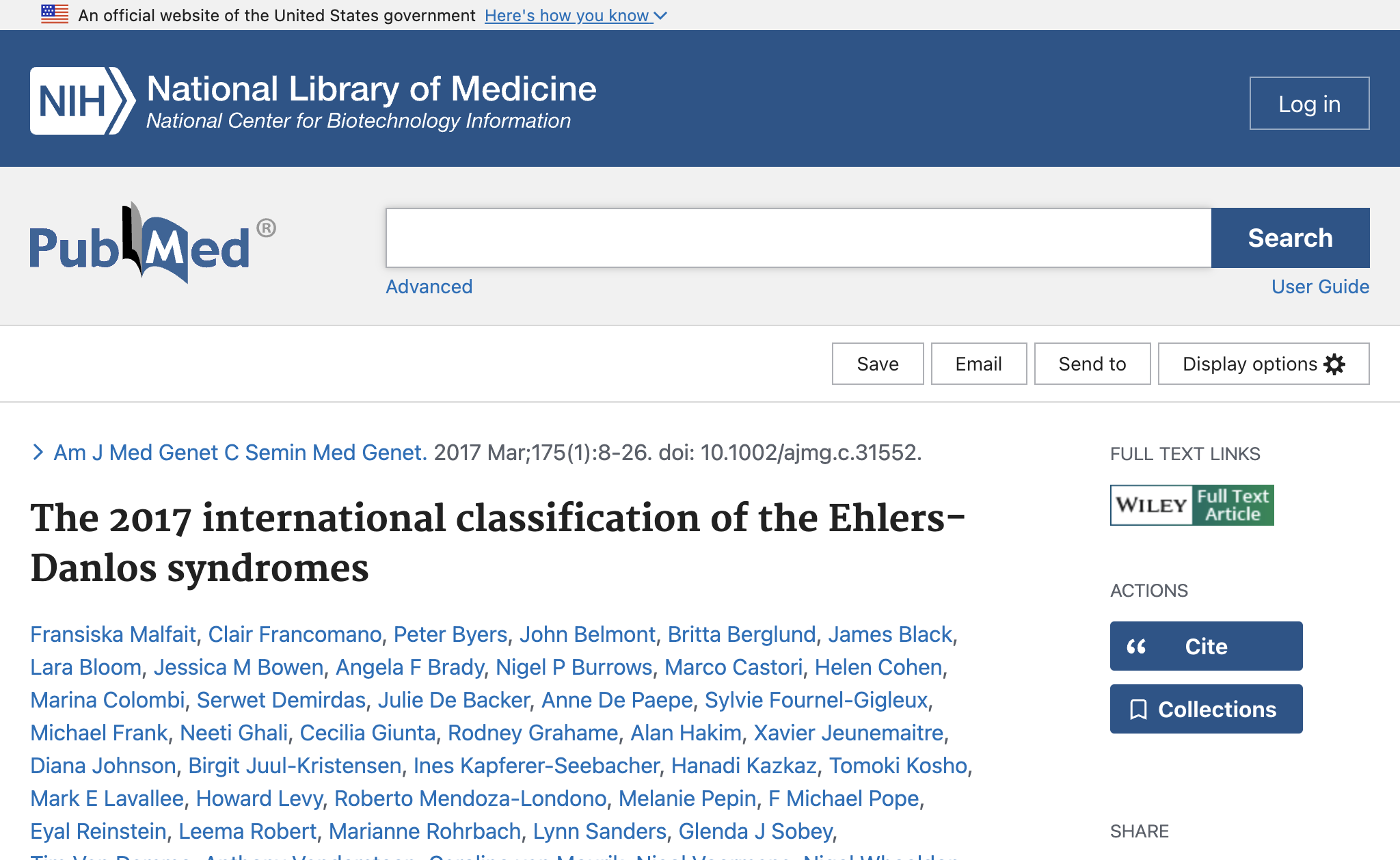The 2017 international classification of the Ehlers-Danlos syndromes.
The 2017 international classification outlines a newly revised framework for diagnosing Ehlers-Danlos Syndromes (EDS), expanding the list from the previous six subtypes to 13. This updated classification is based on both clinical and molecular criteria, reflecting the complexity and heterogeneity of EDS. While most EDS subtypes can now be diagnosed with molecular confirmation, hypermobile EDS remains an exception, as it primarily relies on clinical criteria. The classification aims to distinguish EDS from other heritable connective tissue disorders and to serve as a basis for future research, with the hope that a more comprehensive understanding will improve diagnosis and clinical outcomes.
Published March 18, 2017
Contributors
- Fransiska Malfait
- Clair Francomano
- Peter Byers
- John Belmont
- Britta Berglund
- James Black
- Lara Bloom
- Jessica M Bowen
- Angela F Brady
- Nigel P Burrows
- Marco Castori
- Helen Cohen
- Marina Colombi
- Serwet Demirdas
- Julie De Backer
- Anne De Paepe
- Sylvie Fournel-Gigleux
- Michael Frank
- Neeti Ghali
- Cecilia Giunta
- Rodney Grahame
- Dr. Alan Hakim, MD
- Dr. Xavier Jeunemaitre
- Diana Johnson
- Birgit Juul-Kristensen
- Ines Kapferer-Seebacher
- Hanadi Kazkaz
- Tomoki Kosho
- Mark E Lavallee
- Howard Levy
- Roberto Mendoza-Londono
- Melanie Pepin
- F Michael Pope
- Eyal Reinstein
- Leema Robert
- Marianne Rohrbach
- Lynn Sanders
- Glenda J Sobey
- Tim Van Damme
- Anthony Vandersteen
- Caroline van Mourik
- Nicol Voermans
- Nigel Wheeldon
- Johannes Zschocke
- Dr. Brad T. Tinkle, MD, PhD
